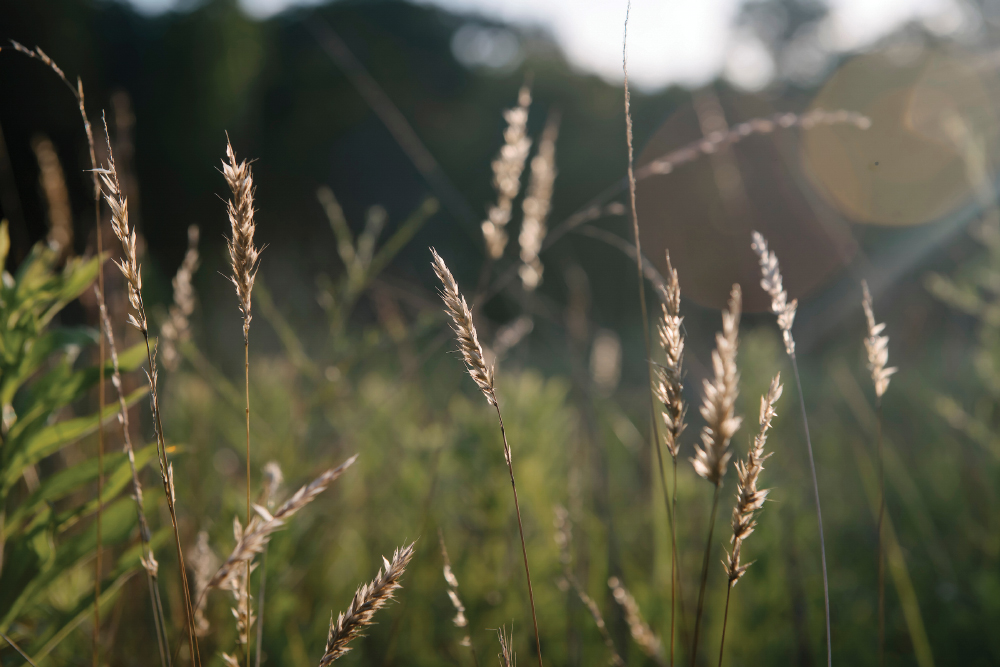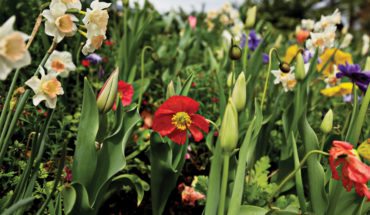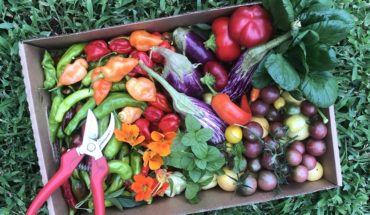This month, restore your gardening tools, pause and reflect, and add plant life indoors while what’s outside recharges.
by Hannah Ross
As daylight dwindles in December, so do our harvests and our to-do lists. There is some relief in the quieter pace of winter garden-tending, creating time to restore our energy in the company of loved ones. Tor most of us who thrive in the nurturing of nature’s abundance, it helps to have projects that keep us connected to the land. The following five tips are sure to keep you engaged with your outdoor space this month, whether it’s large or small, and whether it’s your home or a communal space. In addition to these tips, refer back to the November column for guidance on utilizing the rich resource of fallen leaves, a worthwhile project to continue through December.
Reflect on your gardening year
December presents an opportunity for thoughtful reflection, while the year’s triumphs and letdowns flit about our consciousness. Next month will nudge us towards setting goals and intentions, and it will be easy to forget the details of this year’s lived experience as we look ahead to what is next. So spend some time reflecting and jotting notes on this year’s garden before you forget. What grew well, and what didn’t? Which were your most treasured varieties of vegetables, herbs or flowers? Did you intend to do anything that may have slipped through the cracks? What were your greatest lessons?
Be as specific as you can, thinking about each season of the year, and even each month. The process of reflection and record-keeping is incredibly useful for learning and growth, and can help you set more personal and actionable gardening goals at the start of each year.
Tend to your houseplants
Now that nighttime temperatures are frequently below freezing, many of us have transitioned outdoor plants inside for the season. Indoor plants are potent winter mood-brighteners, and the act of tending them can be therapeutic in this season of dormancy. Whether you’ve just stocked up on new plants at the garden center, or you are wondering how to keep your porch geranium thriving inside until spring, there are a couple key strategies for winter plant care.
First, follow the light. While it may be tempting to prioritize aesthetics when placing your indoor plants, it’s important to think about your plant’s needs first. While your monstera might really pop next to your couch, is it getting enough light there? Do your research for each plant, as their needs will vary; in general, south or west facing windows are best, especially in winter when daylight is more scarce and the sun’s angles have changed. Regularly check houseplant leaves for dust, and wipe them off with a moist cloth (dust can block sunlight from reaching them).
Next, be thoughtful about water. While this may seem counterintuitive, many plants require less water in winter as they grow more slowly, but this too varies from plant to plant. Watering from the bottom using trays can help the roots drink more deeply. Keep in mind that the air is quite dry indoors in winter. Misting your houseplants’ leaves will help keep them hydrated, approximating the humidity they would experience outdoors. Tropical plants greatly benefit from increased humidity; keep them in a sunlit bathroom where shower steam and frequent water use will keep them perky, or use a home humidifier.
Force paperwhite bulbs indoors
In addition to houseplants, forcing flower bulbs indoors is a joyful way to experience nature’s beauty when there isn’t much color or fragrance in our gardens. Paperwhites are rewarding, effortless blooms to enjoy indoors this month.
To start paperwhites, choose a glass container of at least 3-4 inches deep (without drainage holes), and add a layer of gravel or stones. Tuck the bulbs into the container, sitting pointy-side-up on top of the stones. The bulbs help support each other when tightly spaced, and look better blooming in a cluster. Fill in another layer of stones to almost cover the tips of the bulbs. Then fill your vessel with water until it just reaches the base of the bulbs; this water source will kickstart the bulbs’ rooting process. Keep the bulbs in a cool space (about 65 degrees is ideal); light isn’t necessary for rooting. Monitor the water level daily, and refill it anytime it drops below the base of the bulbs. Once you see roots appear, move the vessel into a sunlit window, and prepare for a beautiful display. As the blooms open, they will last longer if you shift the arrangement out of direct sunlight.
Prepping a simple glass vessel with stones and paperwhite bulbs (and including instructions in a handwritten note) makes a lovely gift for party hosts and loved ones throughout the holiday season.
Show your tools some TLC
Our garden tools are stalwart soldiers through the growing season, enduring everything from sweaty hands and sticky saps to harsh sun and hard rain. Now that they are on leave, it’s best we help them recuperate before we ask them to step up to the rigors of spring. This month is an ideal time to clean, polish, and sharpen hand tools, as well as make any necessary repairs on garden equipment. Add a fuel stabilizer to any gas-powered tools to ensure those engines start back up in spring.
To clean your tools, first knock off caked dirt with a putty knife or hard-bristle brush. If rust has accumulated, soak your tool in a 50/50 mix of vinegar and water for a few hours or overnight, and then use a steel wool scrubber to gently remove it. Bleach-free disinfectant wipes can help remove sappy residues. Then, soak tools in hot water with a bit of dish soap, and towel dry thoroughly (air-drying can lead to more rust). Finally, oil your tools to prevent rust on metal parts, and to keep wooden handles from cracking. Linseed or camellia oils are recommended. If your snips need sharpening, there are abundant online resources for learning how to use a whetstone to get those blades back in shape (or, you can take them to a professional knife sharpener).
Practice generosity, starting with your backyard birds
As many of us celebrate holidays this month, gathering and giving with generosity and joy, now is an opportune time to extend that conviviality to the wildlife who share our spaces. With food sources and shelter scarce this time of year, we can make a significant impact on our local ecosystems by providing varied sources of food, water, and habitat.
Care for your backyard birds by providing a few different types of feeders (like tube, suet, and ground feeders) and a variety of types of feed (like sunflower, peanuts, cracked corn, seed mixes, and suet cakes). Bird baths provide a helpful source of water for feeding and bathing; you can even find heated ones for winter. Finally, creating brush piles and keeping parts of your garden a bit wild for the winter— by leaving dried branches, pods, and leaves intact, especially in native plantings and shrubby borders — helps provide valuable habitat for birds, beneficial insects, and other wildlife.
When we begin by being generous with the beings who share our yard, may we awaken to the many other scarcities that exist in our broader community during the winter season, and help to meet those needs with resourceful solidarity. If the garden teaches us anything, it is that tending the earth will often grant surprising abundance — and plenty to share.
This article was originally published in December 2021 on waltermagazine.com




